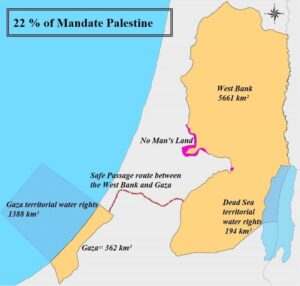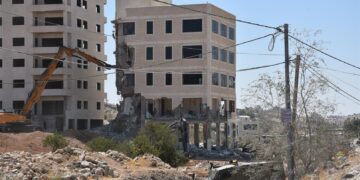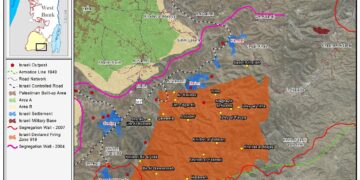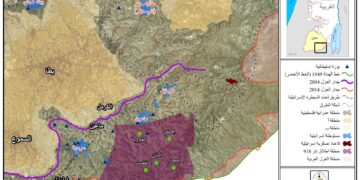When the Palestine Liberation Organization (PLO) entered into the peace process with Israel through the signing of the Oslo Accord on September 13, 1993, it did so with the expectation, shared by the broader Palestinian public, that a sovereign Palestinian state would be established within five years. This envisioned state would comprise the territories occupied by Israel on June 5, 1967, including the West Bank, Gaza Strip, and East Jerusalem as its capital.
The expectation was that, within the five-year interim period set by Oslo, the Israeli Civil Administration would be dismantled, settlements would be gradually evacuated, and Palestinians would assume full control over their land, natural resources, airspace, and borders, laying the foundation for a self-sufficient and sovereign state.
The Palestinian position in the peace process was grounded in a geographic and legal vision based on the 1967 borders, which encompass 22% of historic Palestine. This includes:
- The West Bank (including 49 km² of “No Man’s Land”): 5,661 km²
- The Gaza Strip: 362 km²
- Gaza’s territorial waters: 1,388 nautical miles
- Dead Sea territorial waters: 194 nautical miles
 Yet, these expectations were systematically undermined by Israel’s continued expansion into Area C, which constitutes 61% of the West Bank and remains under full Israeli control.
Yet, these expectations were systematically undermined by Israel’s continued expansion into Area C, which constitutes 61% of the West Bank and remains under full Israeli control.
The peace process quickly descended into a cycle of setbacks and crises. It became increasingly evident that Israel’s strategy in the occupied territories aimed to obstruct peace efforts, slow progress, and ultimately bring the process to a complete halt. Rather than facilitating the emergence of a Palestinian state, developments on the ground suggested that Israel was actively obstructing progress. Beyond expanding the illegal settlements, Israel also encouraged the establishment of unauthorized “outposts”, smaller settler cabins, sheds, and shacks strategically placed on the outskirts of existing settlements. This trend became more pronounced in 1996, when then-Agriculture Minister Ariel Sharon publicly urged settler youth to seize hilltops across the West Bank. These outposts, later retroactively legalized, were part of a broader strategy aimed at fragmenting Palestinian territorial continuity and impeding the formation of a viable state for the Palestinians.
Successive Israeli governments have employed a consistent policy of territorial consolidation through land seizures, house demolitions, and infrastructure control. These measures, alongside a matrix of restrictions on Palestinian mobility and economic activity, have entrenched Israeli military and settler presence throughout the Occupied Palestinian Territory. Such actions contravene international law and United Nations resolutions, particularly UN Security Council Resolution 2334, which affirmed the illegality of settlement activity and recognized it as a significant obstacle to peace. They also violate Article 31 of the 1995 Interim Agreement, which prohibits unilateral actions that would alter the status of the West Bank and Gaza prior to final-status negotiations.
Recent developments have further eroded prospects for a two-state solution. In May 2025, the Israeli government approved the formal establishment of 22 new settlements, including the retroactive legalization of dozens outposts. Israeli officials explicitly framed these moves as part of a long-term strategy to assert permanent claims over the occupied territory and block any pathway to Palestinian sovereignty. This escalation drew strong international condemnation, with the United Nations, European Union, and various states emphasizing the illegality of settlements and calling for an immediate halt to such activities.
The expansion of settlements, coupled with ongoing land appropriation and demographic reengineering, has effectively fragmented Palestinian territory into isolated enclaves. This undermines the territorial contiguity and viability essential for a future Palestinian state, making the vision of two states living side by side increasingly unattainable.
Nearly six decades after the 1967 war, the two-state solution remains more elusive than ever. The cumulative effect of Israel’s policies has been to entrench occupation, prevent the emergence of a sovereign Palestinian state, and systematically dismantle the foundations of the peace process. Without a fundamental shift in policy and renewed and tangible international pressure, the window for a just and durable resolution may soon close altogether.
Prepared by:
The Applied Research Institute – Jerusalem














